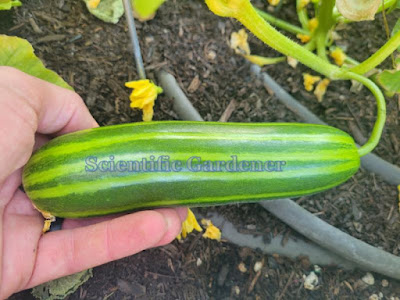When one thinks of the word ‘bushy’ they may think of a plant that is shorter or more compact. At least that is what I think of if someone says the word ‘bushy’ to me. However, that was not my experience with the Bushy Cucumber.
While not a cucumber variety that wants to take over the world, like the Yamato or the Gagon, Bushy is not exactly the most compact either. Perhaps the best way to describe the Bushy cucumber variety I grew was ‘semi-compact’.
Is the length of the vines of my Bushy cucumber because the original Bushy has always been this sprawling? Is it because growers just didn’t maintain the plant and cull the longer-vined plants out of the population? Or is this just one of the many casualties of the seed cultivar consolidation?
What’s seed cultivar consolidation? It is when seed companies run out of some of their seed varieties and substitute them with others. Then, if no other company or supplier keeps the seed variety going, the out-of-stock variety is no longer commercially available. Then within several years, the cultivar no longer exists. While this was a big problem decades ago, supply and demand issues as well as inflation and a desire for greater profit margin make it much more common.
In any case, Bushy was a good pickling variety with mildly short internodes. Very productive, but perhaps not as ‘bushy’ as one would expect.





























































